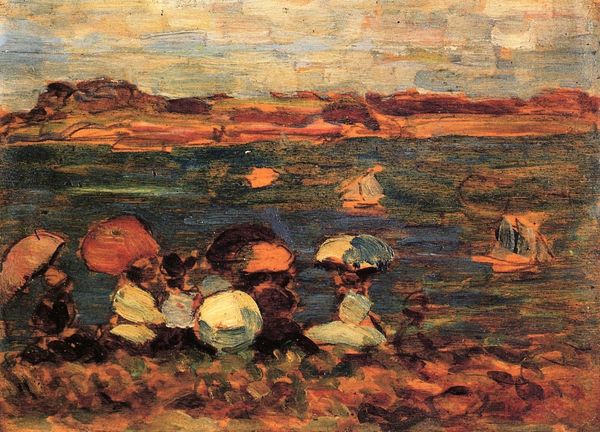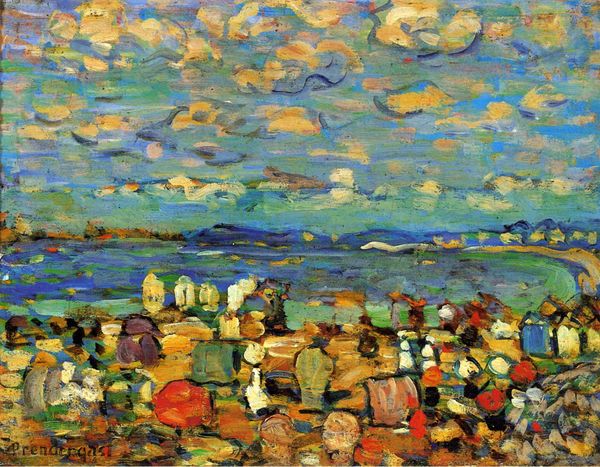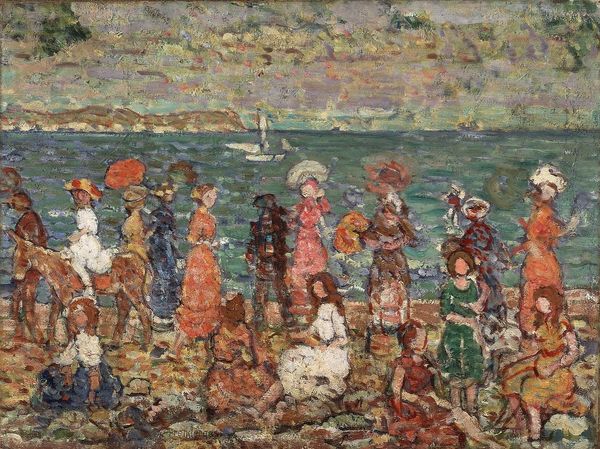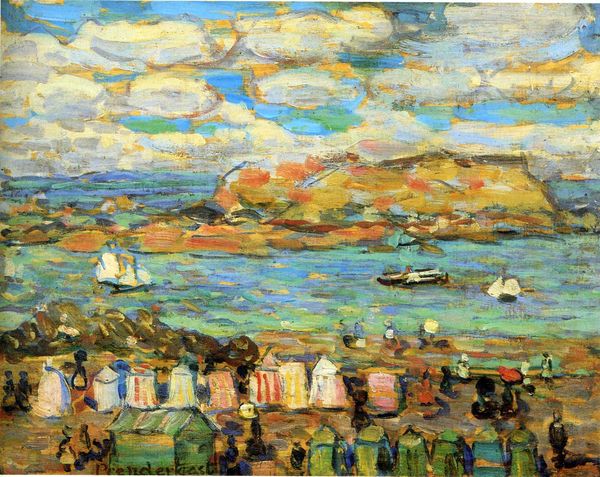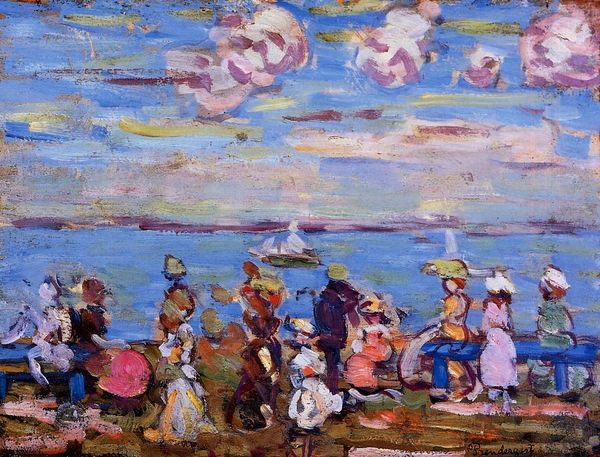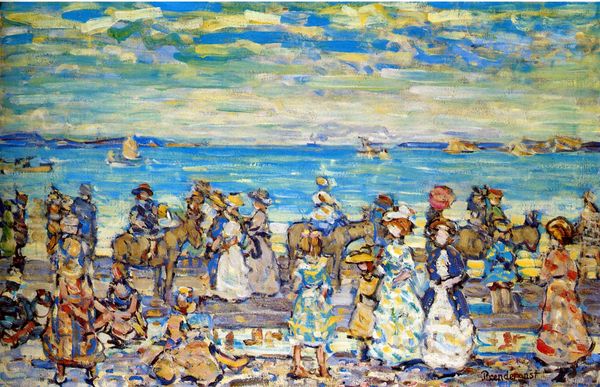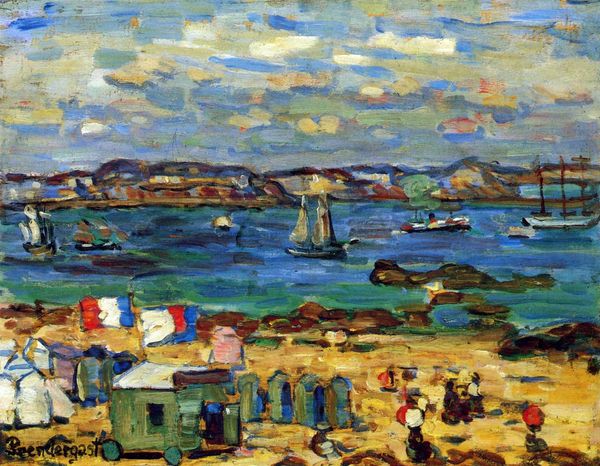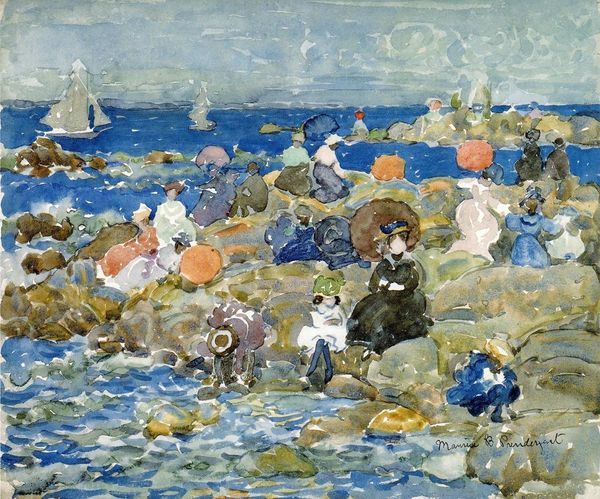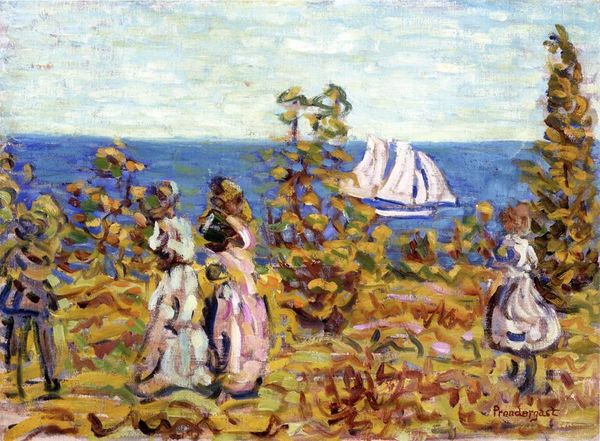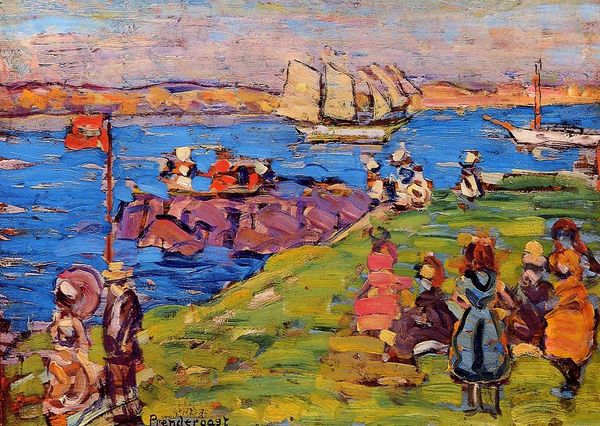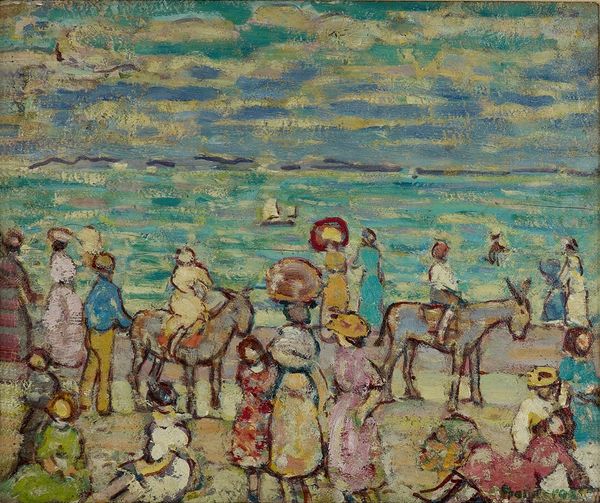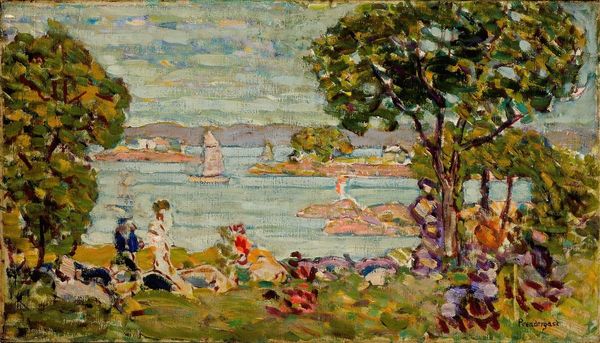
Dimensions: 26.67 x 34.93 cm
Copyright: Public domain
Editor: We are looking at "St. Malo," also known as "Sketch, St. Malo," painted by Maurice Prendergast around 1907. It's an oil painting, and the way Prendergast daubs the paint makes me think of Impressionism, but with bolder colors. What’s your take on it? Curator: Prendergast’s style certainly evokes the Impressionists, but through a Post-Impressionist lens. Consider the social context. The late 19th and early 20th centuries witnessed the rise of seaside tourism, enabled by expanding rail networks and changing social norms. Paintings like this showcase leisure, the upper-middle class enjoying these coastal spaces, and Prendergast often returned to the theme. Do you think this painting romanticizes the beach or tries to tell a story? Editor: It does feel quite celebratory! The colors are joyous, and the figures are all facing the water, soaking it in. There’s a real sense of being in that moment. But, how much were the galleries and exhibitions shaping what he chose to paint? Curator: Exactly! Exhibitions and galleries became important in the promotion and consumption of Impressionism and Post-Impressionism. Artists responded to market demand, creating scenes that were accessible and attractive to a growing collector base. The aesthetic choices weren't necessarily reflections of unbiased taste. Instead, they highlight Prendergast's negotiation with art world structures. I wonder, would his vision of "St. Malo" have been different without the pressure to appeal to buyers? Editor: That’s a good point; you almost forget that art exists within that business model too. Curator: It's important to consider the political dynamics influencing it. These works remind us that art is inseparable from cultural institutions. Editor: Absolutely! It’s fascinating how you've highlighted the relationship between the painting, social changes, and the art market. Thanks!
Comments
No comments
Be the first to comment and join the conversation on the ultimate creative platform.
